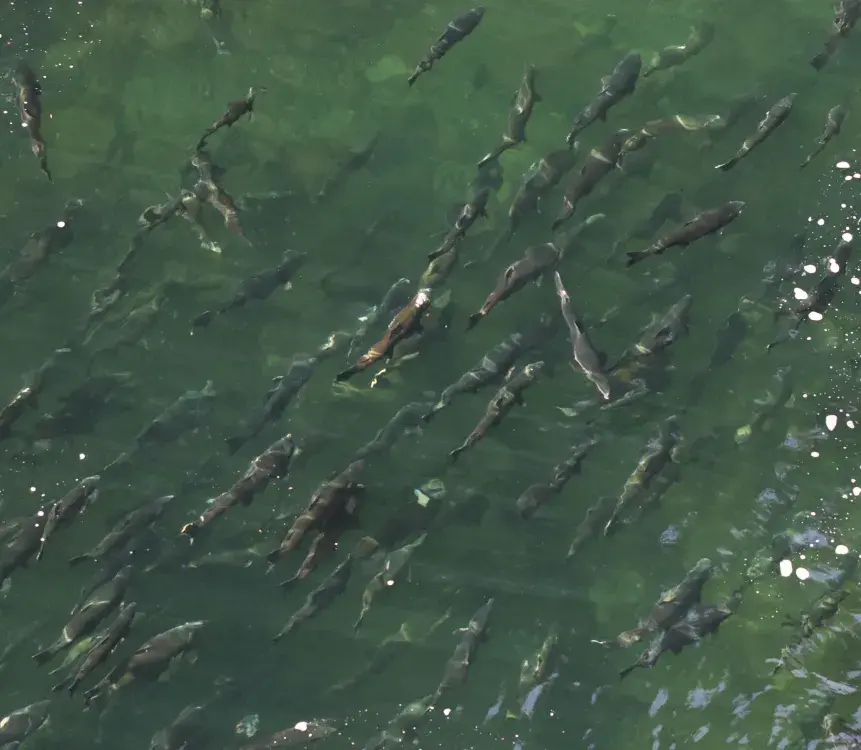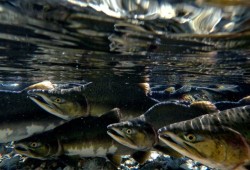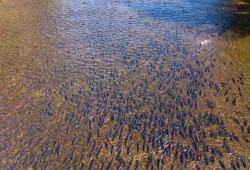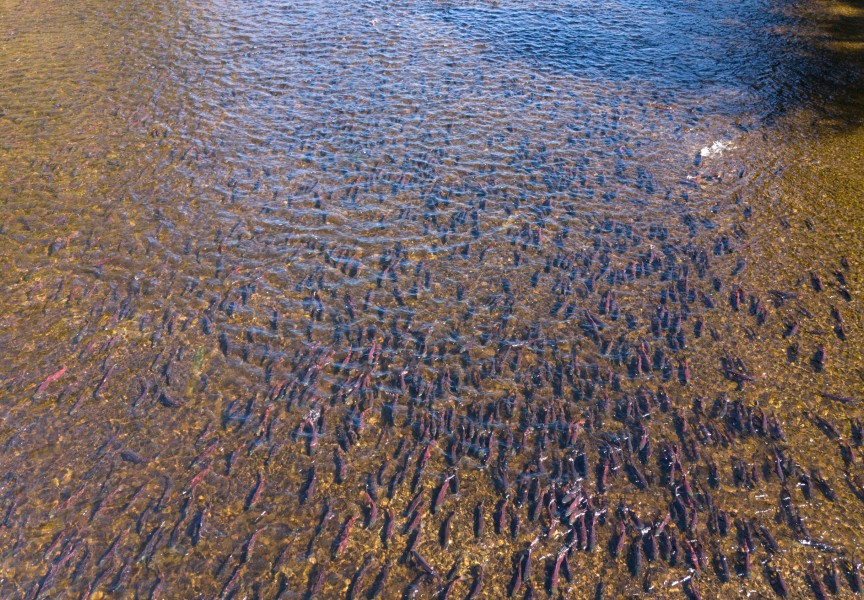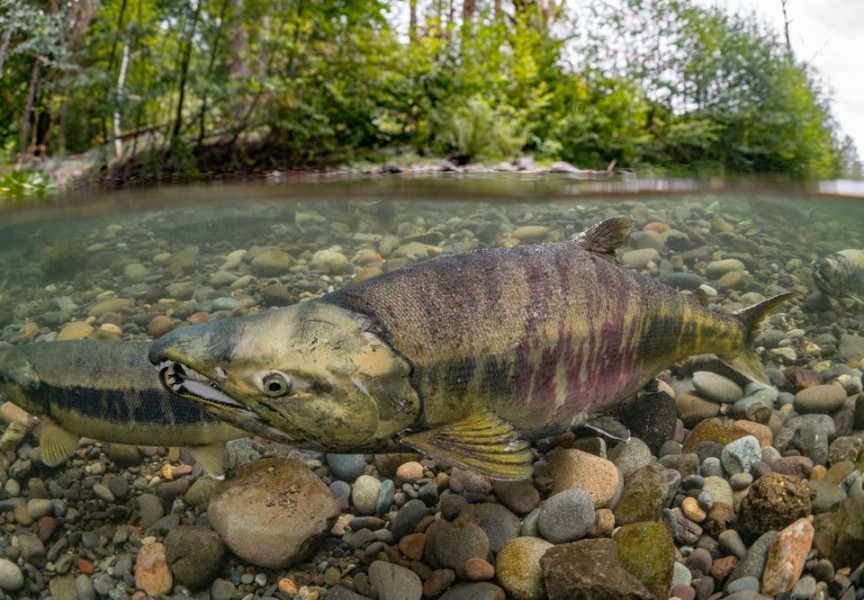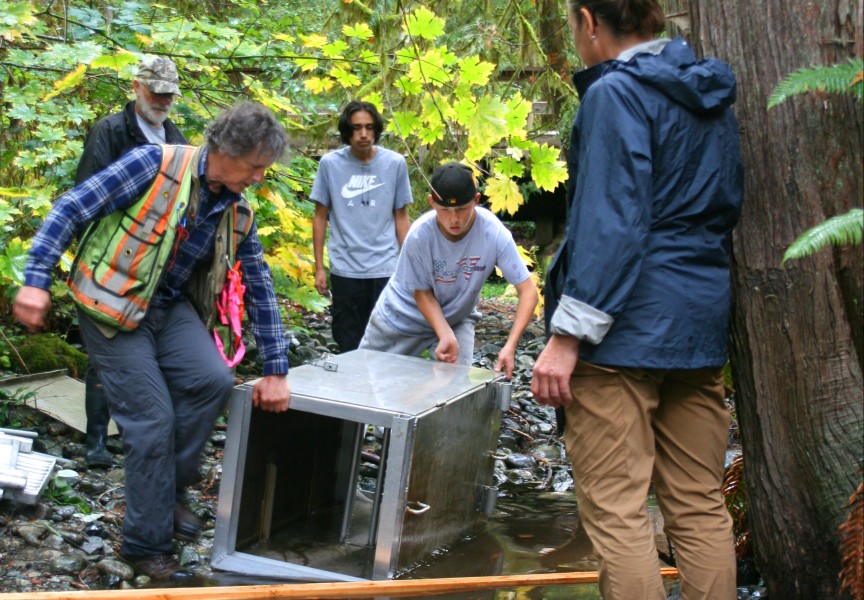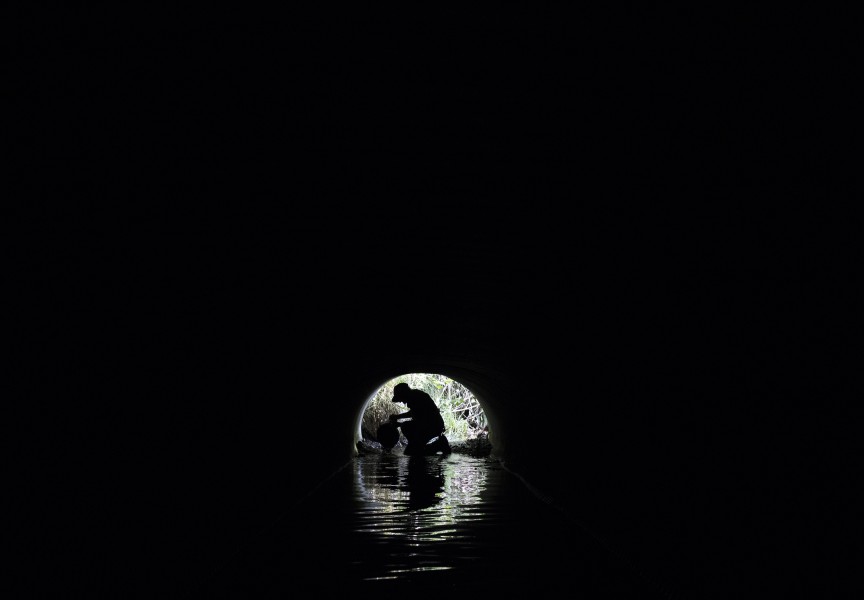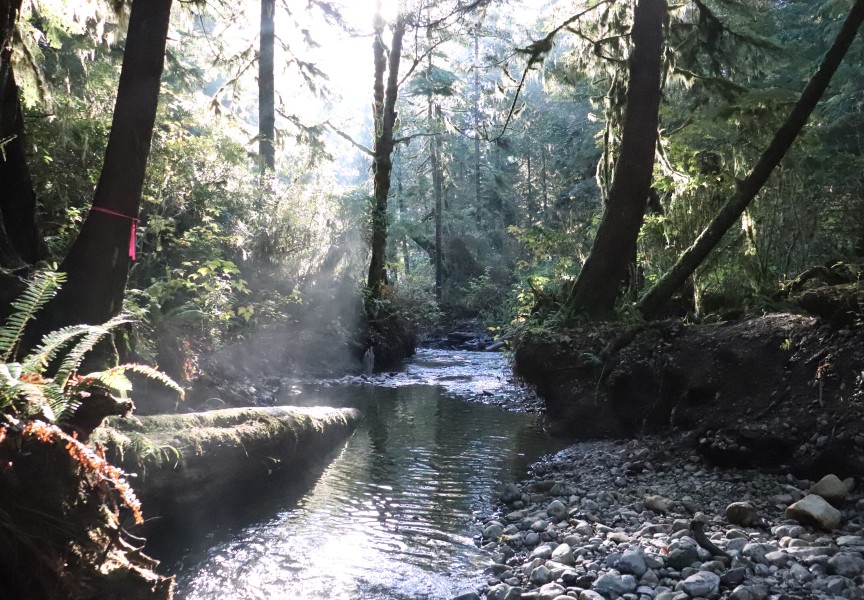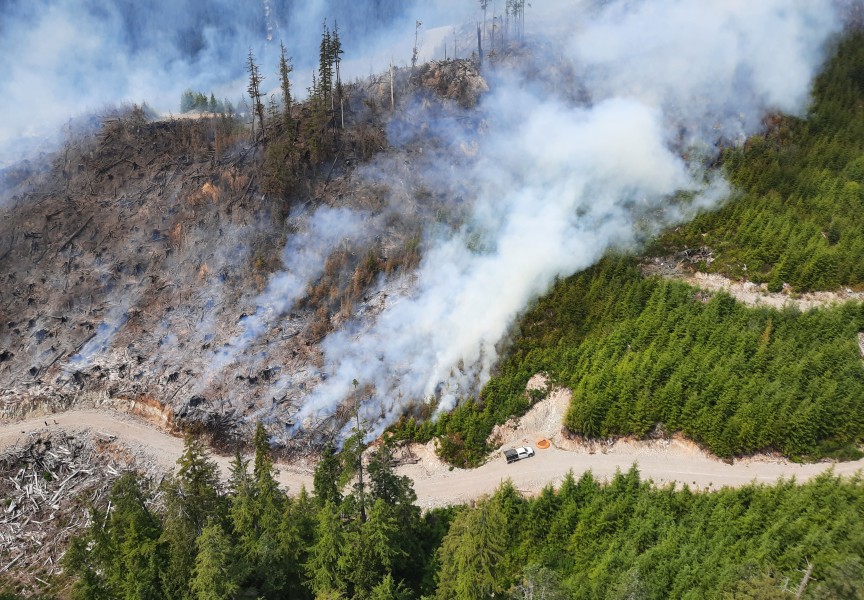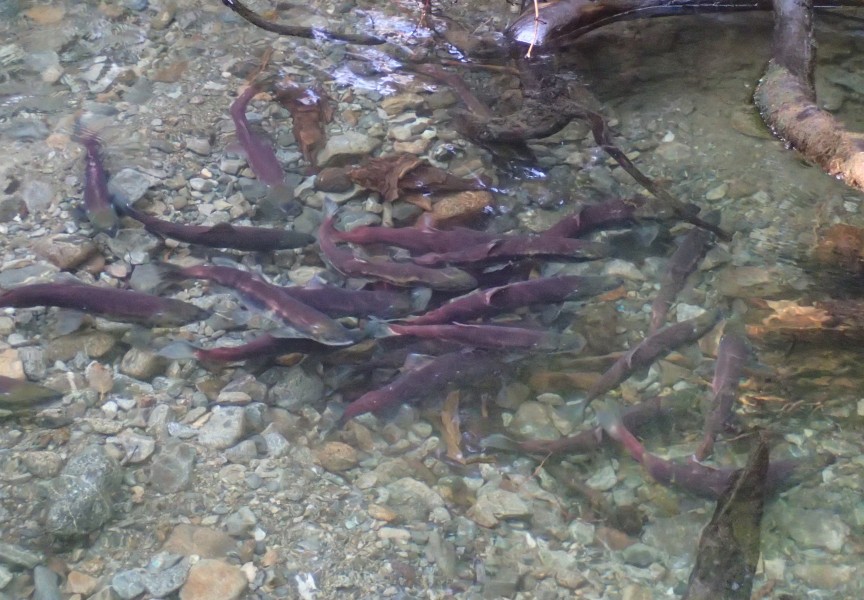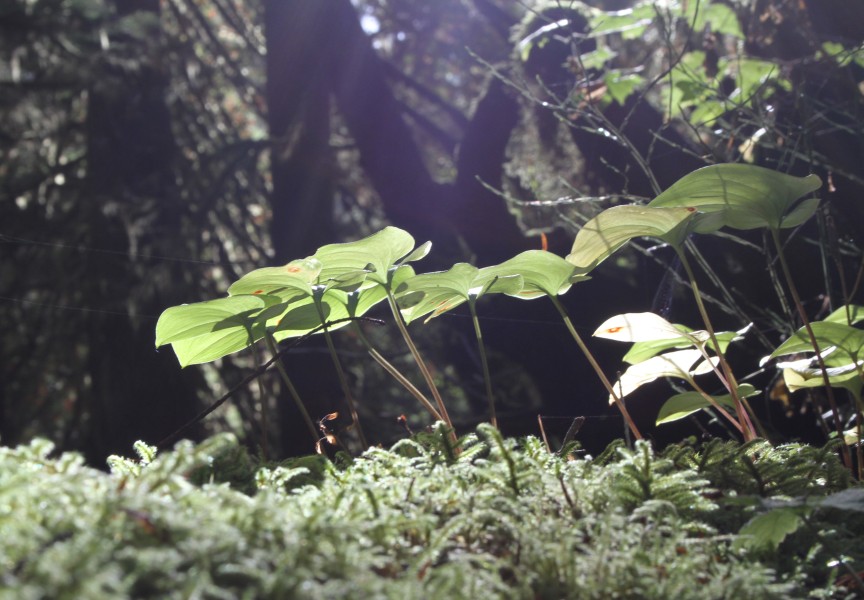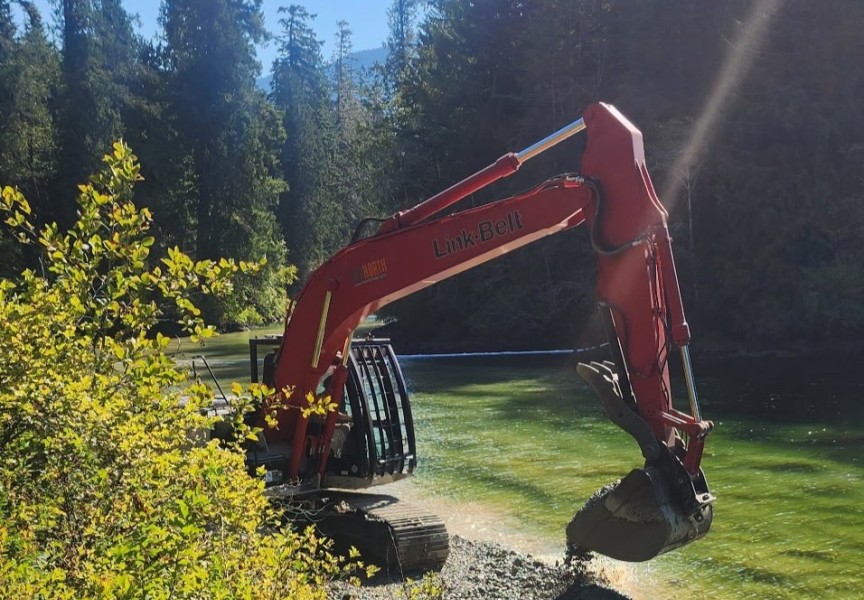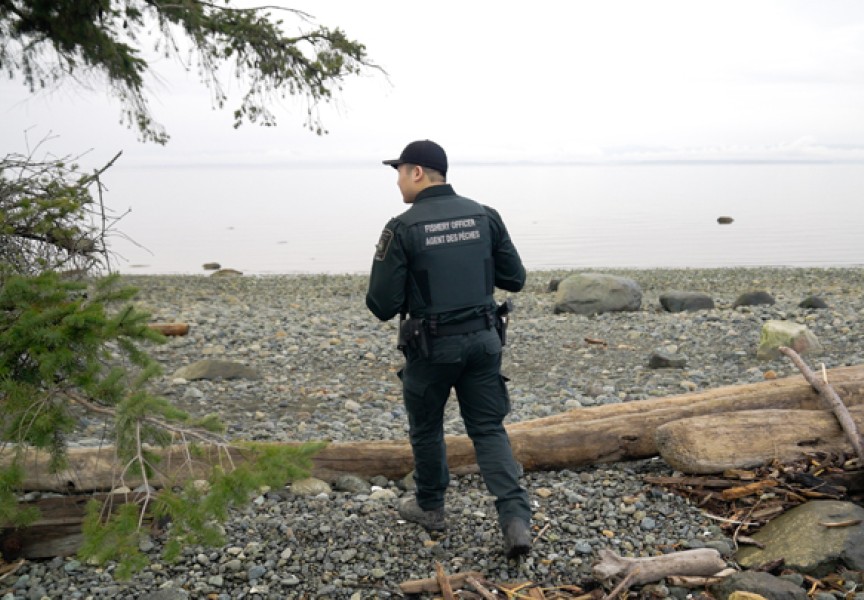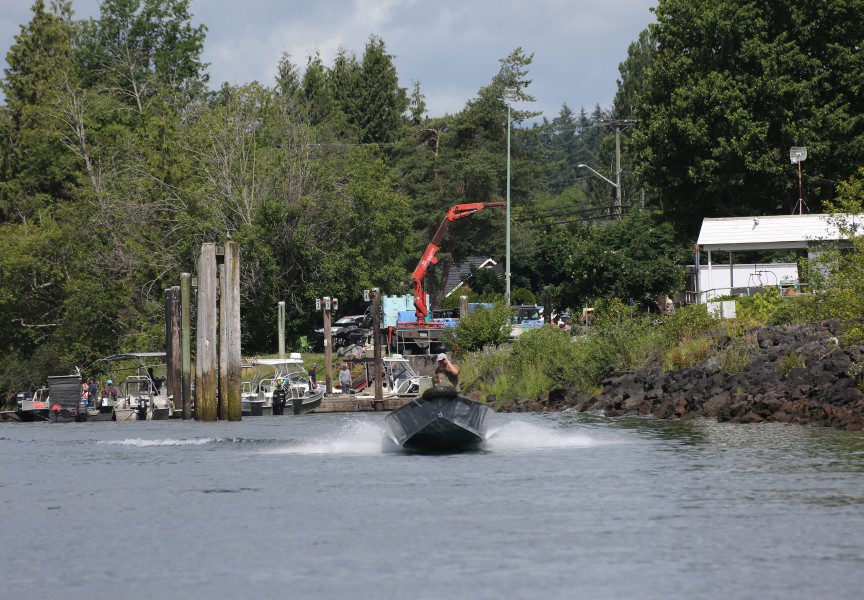A recent annual report from the Pacific Salmon Foundation (PSF) details which populations are rebounding, but gaps in data obscure why certain stocks are increasing or decreasing.
The PSF’s 2025 State of Salmon report categorizes salmon population averages by the spawner abundance and the total abundance. The spawner abundance is the number of mature salmon that return to their spawning grounds to reproduce after escaping. The total return abundance is the number of spawned and caught salmon that survive to maturity.
The PSF notes that though spawner abundance for some salmon species might be high, it isn’t enough to raise the long-term average, which is the accumulation of all data recorded over the years.
The spawner abundance for the sockeye salmon in west Vancouver Island, for example, increased by 11 per cent over the last year. The total abundance decreased by four per cent, but that didn’t stop Graham Murrell, a marine biologist and the fisheries manager for the Hupačasath First Nation, from noticing a favourable sockeye salmon rebound this year.
“Our sockeye returns were good for the most part,” said Murrell. “They move with the weather.”
Favourable cooling temperatures in west Vancouver Island made a large yield possible.
West Vancouver Island, east Vancouver Island and the Mainland Inlets are split up in this year’s annual report in an effort to capture how the salmon react to the rich ecology unique to west Vancouver Island. Compared to the other regions studied, west Vancouver Island doesn’t have large river systems. The region is made up of remote inlets and small coastal streams that together build a diverse ecosystem.
With that, diverse and small populations of salmon, like sockeye, dot the coast. The notable salmon-bearing rivers include Great Central Lake, which is monitored by the Hupačasath First Nation.
The Great Central Lake dam helped yield better returns for the nation. A fish flow committee oversees the lake to “increase or decrease flow to make sure we have sufficient water for the duration of the salmon migration season,” said Murrell.
Favourable ocean conditions are theorized in the PSF report to be one of the contributing factors to salmon recovery. With a short life-span of two years, pink salmon spend most of their time in the ocean rather than freshwater, which might be why some regions are experiencing a massive spawner abundance increase for the species.
However, the issue of insubstantial data relevant to salmon recovery remains.
As it stands, the most recent decade has been the worst for collecting salmon spawning data, according to PSF’s Senior Director Katrina Connors.
“The information that we use to assess the state of salmon doesn’t exist already in a centralized place,” said Connors, “part of the effort behind producing [the State of Salmon] report goes into identifying what are the best sources of information for each [salmon] species and population across the 10 regions.”
The PSF collected data from organizations like Fisheries and Oceans Canada, various technical committees, as well as the Pacific Salmon Commission. Regions that did not have adequate data were often assessed with indicator systems belonging to different organizations. Sometimes, the indicator systems would not have enough resources to accurately capture individual diversity in the salmon, making it hard to characterize fluctuation in population.
Jim Lane, director of fisheries for the Nuu-Chah-Nulth Tribal Council (NTC), has highlighted that the biggest challenge with understanding why certain salmon populations are rebounding is that there is not enough proper data.
The current state for the coho salmon is reported by the PSF to be below long-term average “for the first time since 1999” in west Vancouver Island. But, Lane has noted that coho salmon are not getting noticed enough to garner the claims associated with sharp population decline, nor figuring out a clear idea of why this might be happening.
The gaps in data make it hard to assess if the reduction of certain external and harmful activity to the salmon population had a direct impact in recovery. Open-net aquatic agriculture, for example, has been slowly phasing out of west Vancouver Island, but with multiple interconnected variables affecting salmon productivity, both Connors and Lane are tentative to directly label that as a contributing factor.
“There’s a lot of information about open-net fish farms that make it hard to produce single variable results,” said Lane. “That information can change, which will end up changing the result.”
Lane added that a variety of interactions are affecting salmon differently from one year to the next. Currently biologists don’t sufficiently understand these factors enough to nail down one variable as the single reason as to why some stocks are improving, he said.
Similarly, Connors said it’s “hard to say” if the thinning out of open-net fish agriculture is a leading factor in salmon recovery.
“For the PSF, the reality is: it’s a bit too early to tell. We don’t have enough data to confidently attribute [salmon recovery] to fish farm removal, but it’s likely a factor at play,” said Connors.
Freshwater in west Vancouver Island has been experiencing worsening conditions, with drought being a main issue highlighted in the report.
“Droughts [were happening] every five years, for example. And now, it's pretty much every year we’re preparing for that inevitability to hit us,” said Murrell regarding how droughts have affected the Hupačasath First Nation.
Industrial logging on west Vancouver Island could also have a part in droughts. Logging disrupts the unique terrestrial and aquatic ecosystem of west Vancouver Island by depositing sediments in streams and estuaries. Rivers that depend natural flow are prone to drying up due to industrial logging causing more sediments to deposit in streams, said Lane.
“Industrial logging doesn’t directly cause droughts, but they are definitely one of the leading factors,” said Lane, noting that drought effects are enhanced by the loss of shade and sediment buildup in salmon habitat.
Though gaps in data remain a persistent issue, hope for salmon recovery is still strong.
“We’re seeing signs of recovery in some regions,” said Connors. “To me, it speaks to the fact that salmon can still return in fairly large numbers and we need to do everything to create the conditions for success.”

